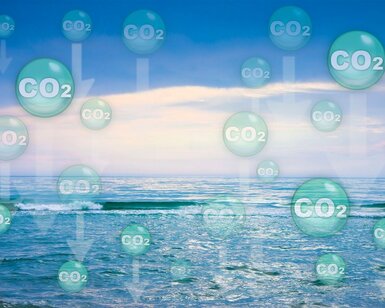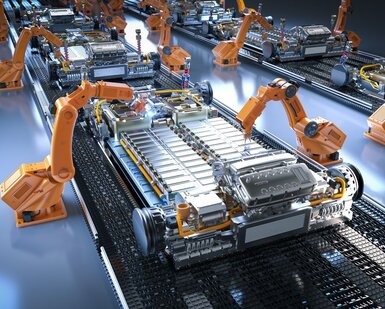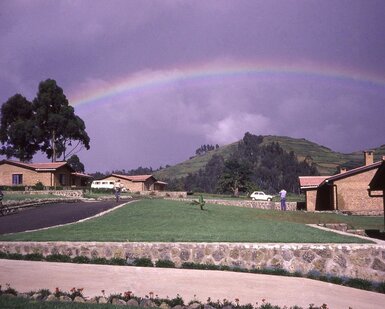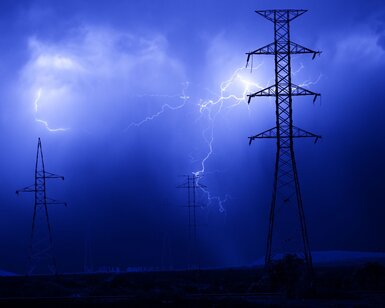Please type a search term (at least two characters)
News
This Year’s Gas Analysis Conference: What to Expect
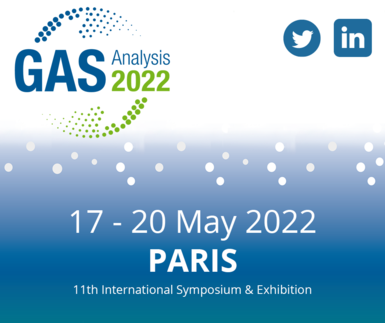
Annarita Baldan and Martine Carré, chairs of the organising committee of the 11th International Gas Analysis event, discuss what they are most looking forward to at the upcoming conference, taking place in Paris, France on 17 to 20 May 2022.
From 17 – 20 May 2022, the French Metrology School, CFM, is hosting the 11th edition of the GAS Analysis conference in Paris, France, and EURAMET is a partner of the event.
The much-anticipated event is the globally leading symposium for gas analysis. In partnership with Global Industrie and Measurement World exhibitions, that are also taking place on the same dates and in the same location, the GAS Analysis event will provide a forum for experts across industry and society to come together, to discuss the latest developments and applications related to gas analysis.
The biannual event attracts hundreds of experts from academic institutions and industry, from more than 30 countries worldwide, and the organisers look forward to a similarly engaging outcome this year as well.
In the lead up to the event, Annarita Baldan (VSL, Netherlands) and Martine Carré (Air Liquide, France), the chairs of the organising committee for this conference, have provided the following insights in interviews with EURAMET.
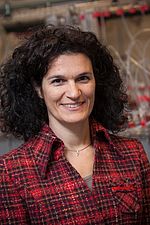
Interview with Annarita Baldan
What does VSL do?
VSL is the National Metrology Institute (NMI) of the Netherlands. We maintain the measurement standards for most of the SI units in support of reliable measurements. In chemistry, we focus our activities on gas composition measurements for energy, climate, air quality and industrial processes.
What is your role at VSL and within EURAMET?
At VSL, I am Chief Scientist, and my role is to support the development of accurate measurement standards and methods for gas analysis, to coordinate strategic activities, to engage with industry, and to represent VSL and metrology in national and international technical committees (TCs) - such as standardisation TCs in air quality and the EURAMET TC, ‘Metrology in Chemistry’.
In addition to that, within EURAMET, I am the Chair the of the European Metrology Network (EMN) for Energy Gases.
Can you tell us a bit more about the EMN for Energy Gases and what it hopes to achieve?
This network, made up of 19 European NMIs, aims at building a knowledge hub for the measurement of Energy Gases, to support the energy transition to more sustainable fuels. Europe’s ambition to become climate neutral by 2050 will require the introduction of renewable energies, such as hydrogen. As for all energy fuels, the quantity and, importantly, quality, need to be measured to ensure fair trade and compliance with regulation & safety.
EMN members have complementary expertise in measuring energy gases, including gas composition measurements. Our members work together with industry and top research organisations to develop measurement solutions so that Europe, and also other world regions, can reduce emissions and improve our climate.
It is amazing to see how projects from the European Metrology Research Programmes such as ‘Metrology for hydrogen vehicles’ and ‘Metrology for biomethane’ are helping industry with the measurement of trace impurities of contaminants that can affect the use of hydrogen fuel cell vehicles, or the injection of biofuels into the natural gas grid!
What are you hoping will be the most important outcome of the upcoming GAS analysis event?
Due to the pandemic, over the past two years, there were no opportunities to participate in dedicated events and to engage with other experts.
GAS Analysis is the leading event in gas analysis worldwide – therefore, I am sure that the coming event will be well-attended.
I am really excited to learn about the newest developments in gas analysis, to see live demonstrations of cutting-edge measuring instruments, and to share knowledge and experience with people from different countries.
And, of course, I look forward to spending time in beautiful Paris.
Is there any one thing in particular that you and the organising committee are aiming to achieve?
Although the organisation structure remains the same as the past editions, for the first time, the event is organised in Paris - thanks to CFM, the lead organiser. Together with the organising committee, which is a great group of experts from metrology and industry - such as specialty gas, analytical equipment, and chemical manufacturers - we aim to increase the visibility of metrology for gas composition measurements.
This event will have some key-note lectures that highlight the impact of robust reliable measurements on societal challenges; including energy transition, climate air quality and, of course, industrial innovation.
The Thursday sessions will cover the themes of ‘Energy Transition’ & ‘Climate and Air Quality’. How will these sessions tie in with broader EU aims related to mitigating climate change and reducing greenhouse gas emissions to zero by 2050? What is the role of the EMN for Energy Gases in the GAS Analysis event?
Climate, energy transition and air quality are closely connected. To support mitigation policies that address climate monitoring and reduce EU emissions, both accurate measurements and data monitoring are needed. As example, the combination of, on one hand, monitoring CO2 emissions in air and, on the other, measuring CO2 storage and utilisation levels, will allow scientists and policy makers to understand climate change and to adopt adequate mitigation measures.
At the GAS Analysis Event 2022, the EMN for Energy Gases together with representatives of EURAMET, the EMN for Climate Ocean Observation and the proposed EMN for Pollution Monitoring, will have the opportunity to introduce the networks and to explain how we work at addressing measurement challenges to build towards a carbon neutral society.
But at this event, we will do much more than just that. Members of the EMN for Energy Gases, and metrology experts in gas analysis from many European National Metrology Institutes will all deliver very interesting scientific lectures. They will present the latest findings from projects under the EURAMET European Metrology Research Programmes and from their national research programme in the sessions, ‘Energy Transition: Hydrogen’ and ‘The journey towards decarbonisation’.
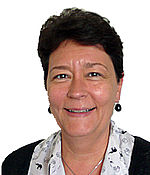
Interview with Martine Carré
What is Air Liquide’s role at the upcoming Gas Analysis Event?
Two colleagues each from our organisation are part of the Scientific Committee and the Organising Committee of the Gas Analysis Event, respectively. Colleagues in the Scientific Committee will help to select posters, papers, overviews and prepare agendas for the symposia, and so on. As part of the Organising Committee, myself and Jack De Jong (also from Air Liquide) will be deciding everything linked to the organisation and the preparation of the event. This year, I am the co-chair of this event. Air Liquide is also a sponsor of the conference. So, we are involved in many parts of the event this year.
How do you think the event and the sessions will impact key stakeholders in the energy gases industry? What are you most hoping to get out of this event?
First of all, I think this event is important to share knowledge, new innovations, and ideas for new improvements in analytical equipment for energy gases.
It is also important to share and discuss any remaining issues from industries that we have to solve in order to develop new solutions for energy gases in the future. This will be key to reduce our carbon emissions and reach the European target of becoming carbon neutral by 2050.
What I hope to get out of this event is to learn new things, meet up with colleagues who I already know, but have not been able to see for the past couple of years, and also to meet new people.
Why is the collaboration between companies like Air Liquide and the rest of the metrology community important? What is working well with the collaboration so far, and what do you think could be improved?
I think it's important to collaborate with National Metrology Institutes (NMIs) because they are the first link in the measurement chain, so it's really essential to work with them and to be sure that we maintain this link between these institutes and the final users of our mixtures which are used for calibration of equipment. NMIs produce primary reference standards and ensure entire comparability between states. For Air Liquide, as one of the leading specialty gases suppliers, it is vital to work together with NMIs and to maintain a good relationship, to guarantee the accuracy and traceability of our products for our customers.
We also have direct collaboration related to specific topics with NMIs. We are co-partners in projects within the European Metrology Research Programmes, where it is important to work on joint publications, and other joint work at a standardisation level. I think that every part of our collaboration chain is vital and works well. Of course, we would always like to do more, but on both sides, are limited by our resources. That’s really the only thing we need to improve – to have more resources to work better together.
Who from your colleagues can we expect to hear from at the event?
Firstly, there is a free main presentation, which will be given by one of my colleagues at Air Liquide, Tracey Jacksier. She is going to speak about carbon and oxygen fractionation of pressurised CO2 as a function of temperature (at the Climate and Air Quality Thursday Session) and will present the results of related studies – which is a very interesting topic.
Also, there will be a presentation from Jean-Luc Blanc (at the Tuesday Industrial Innovation Session), which will cover our new product for speciality gases. It combines a cylinder valve and regulator in one piece or element – which will improve the quality of mixtures, because there is less risk of contamination, and will also improve the safety because you can easily transport the cylinders, something that is not the case when you have your regulator attached to a cylinder directly. So its really an added value and the presentation will show what can be gained by using this new system.
The last presentation contribution from Air Liquide will cover the analytical development in hydrogen. In our analytical service laboratories, you will see how we carry out the sampling and how we carry out the analysis at hydrogen refuelling stations.
Which gas analysis topics are you most interested to hear about at the conference?
I tried to think about this, but generally I'm interested by all of them because there are several very engaging topics that will be discussed, and so I’m facing issues trying to select which sessions I most want to attend!
I think one thing to note is, that this year we also have short courses available, which will be done by experts in various fields. I encourage people to attend these courses, because this is a unique element of this year’s event. Of course, the exhibition itself should also be great – in fact, this year, we have around 32 exhibitors, which is a record for this symposium.
What are you most looking forward to personally at the upcoming GAS Analysis event? Is there any part of the exhibition or any session that you personally are most interested in attending?
I’m very much looking forward to the discussion and question & answers part of the sessions. Of course, it’s important to attend presentations by speakers, but the questions part of the sessions will be crucial in helping us to improve our processes and collaborative initiatives. So that’s really what I’m looking forward to the most. I also am excited to gain inspiration for my own work, to see different things that will open up my mind so that I can come up with new solutions and ideas.
See the full programme of the event >>
Want to hear more about EURAMET?
Sign up for EURAMET newsletters and other information
Follow us on LinkedIn and Twitter
Carbon dioxide, released from man-made activities, is lowering the pH of the Earth’s oceans, and impacting the health of marine organisms worldwide more
Supporting automated and reconfigurable manufacturing systems more
Working with external project Cool White to test and suggest improvements on the locally available white paints more
The project FutureEnergy has provided new calibration services for ultra-high voltages and a good practice guide on Lightning Impulse dividers more
For many of the 5000 photonics companies in Europe a precise knowledge of a material’s optical properties is vital for industrial competitiveness more

